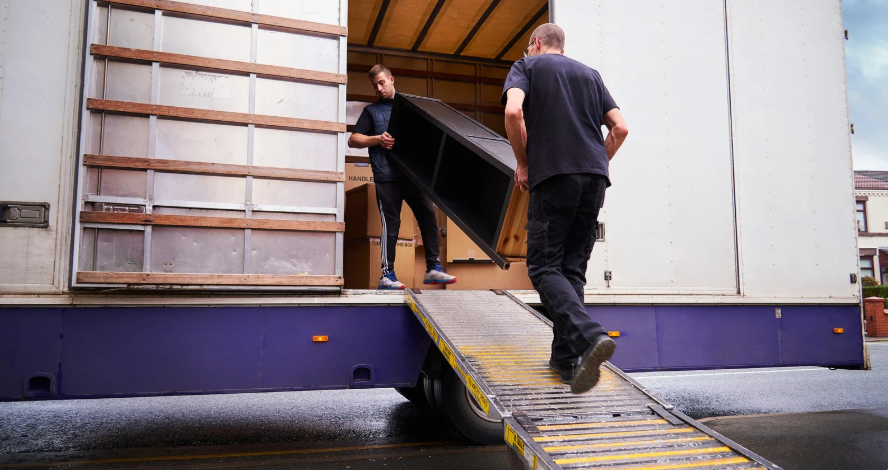Key Differences in Construction Debris Removal Petaluma

Every cleanup job must follow local and state safety regulations, which influence how waste is handled and transported. In construction debris removal Petaluma, companies are required to meet specific standards that protect both workers and the public. These rules cover everything from how debris is stored on-site to how hazardous materials are processed.
For example, failing to secure sharp or heavy items can lead to workplace injuries. Similarly, not following rules for disposing of asbestos or lead-based materials can result in heavy fines. Professional removal services make it a priority to stay compliant with all guidelines, using protective gear and proper techniques. These safety steps not only reduce the risk of accidents but also ensure the project runs without legal interruptions. From start to finish, regulation-compliant practices are central to maintaining safe, efficient, and lawful operations on any construction site in the Petaluma area.
Disposal Destinations Make a Difference
Where the debris ends up is just as important as how it’s removed. In construction debris removal Petaluma, professionals aim to divert as much waste from landfills as possible by using recycling centers and reuse facilities. This eco-conscious approach benefits both the community and the environment.
Concrete can be crushed and repurposed for roads, while clean wood might be reused for future builds or landscaping. Even metals, plastics, and drywall can often find second lives through specialized recovery programs. Knowing the correct disposal route is vital to ensure compliance and sustainability. Disposal isn’t a one-size-fits-all step—it’s part of a thoughtful strategy that affects long-term environmental outcomes and keeps local ecosystems healthier. Efficient sorting and smart destination choices play a huge role in reducing the project’s carbon footprint. By doing more than just dumping materials, professionals raise the standard for responsible cleanup.
Timing and Scheduling Vary by Project Type
Construction timelines are never one-size-fits-all, and the same goes for cleanup. Some projects require immediate debris removal to maintain progress, while others may allow for phased clearing throughout the process. Construction debris removal Petaluma teams assess these time constraints before developing a cleanup plan tailored to the build schedule.
Delays in debris removal can lead to unsafe working conditions, blocked access routes, and unnecessary hold-ups in construction milestones. A well-coordinated schedule ensures that debris is cleared at just the right times, keeping the site organized and minimizing disruption. Whether the job is fast-tracked or long-term, aligning cleanup with the construction phases keeps everything on track. This kind of flexibility is critical for success, especially when permits and inspections are part of the process. A reliable cleanup crew adapts to these shifts to make sure no part of the project suffers due to poor timing.
Labor Needs Depend on Project Scope
Manpower is another area where significant differences emerge. A single-family home remodel may only need two or three crew members, while larger sites like office buildings or retail developments might require teams of ten or more. In construction debris removal Petaluma, matching the labor force to the project scope ensures timely and safe cleanup.
Too few workers can slow down the job and increase physical strain, while an oversized team may lead to crowding and inefficiency. Balancing labor ensures that tasks are delegated effectively and deadlines are met. Skilled workers are also better equipped to handle hazardous materials and heavy lifting, making the job safer and more streamlined. Having the right team size—not too large or too small—is one of the first steps toward a smooth removal operation. Labor planning is a strategic part of managing cleanup from start to finish.
Permits and Legal Requirements Can Vary
Some cleanup tasks require more than just labor and tools—they need the proper permits. Depending on the type and volume of waste, local laws might demand special permissions for hauling or disposing of construction debris. In construction debris removal Petaluma, professionals stay informed about these changing regulations to avoid legal issues.
Permits might be required for moving hazardous materials, accessing disposal sites, or blocking street access during removal. Failing to secure these can result in costly delays or penalties. That’s why experienced removal teams often manage these administrative tasks on behalf of the property owner or contractor. Knowing which rules apply and acting on them ensures a smooth process with no last-minute surprises. Legal compliance isn’t just about ticking boxes—it’s about keeping projects legal, efficient, and respected within the community.
Environmental Practices Are Project-Specific
Sustainability has become a priority in construction cleanup, but not every project will approach it the same way. Construction debris removal Petaluma often involves custom plans to manage and reduce environmental impact, depending on the material types and volume.
Eco-conscious clients may request more detailed sorting, on-site recycling, or even partnerships with green-certified disposal sites. In contrast, other projects may prioritize speed over sustainability but still need to follow basic environmental guidelines. The approach varies by client goals, budget, and site logistics. Whatever the preference, local teams offer flexible removal plans that align with eco standards without compromising quality. Sustainable practices help reduce carbon footprints and preserve resources, but they need to be adapted thoughtfully to each job. Whether through reuse, recycling, or responsible transport, environmentally aware removal strategies make construction sites cleaner and greener.
Conclusion
When construction wraps up, the mess left behind shouldn’t slow you down. With the right team by your side, clearing debris becomes a fast, stress-free step in your project timeline. Whether it’s a residential remodel or a large-scale commercial build, having professionals who understand the nuances of proper cleanup makes all the difference. Fuhgeddaboutit Junk Removal is ready to handle all your construction debris removal needs in Petaluma, CA.
Our experienced crew, flexible scheduling, and responsible disposal methods ensure your site stays safe and clean from start to finish. Let us take the load off your shoulders so you can focus on what’s next. Call us today at +1 369-202-4522 or email fuhgeddaboutitjunkremoval@gmail.com to schedule your customized cleanup service. Reliable, fast, and local—Fuhgeddaboutit Junk Removal delivers more than just junk hauling. We bring peace of mind to every project we complete.
Sorting through leftover materials after a construction project can be more complex than it seems. From lumber scraps and drywall to concrete and insulation, each type of debris demands a specific approach. That’s where professional services focused on construction debris removal Petaluma come into play. The methods, equipment, and disposal practices used can vary widely depending on the project's size, type, and location. Whether it's a residential renovation or a large-scale commercial build, knowing the distinctions in removal strategies helps ensure the site stays safe, compliant, and clutter-free throughout the process.
Residential and Commercial Cleanup Vary by Scale
When it comes to construction debris removal Petaluma, residential and commercial projects often differ in scale and scope. Residential sites usually involve smaller volumes of waste—such as broken tiles, wood, and insulation—which can be cleared quickly. These jobs typically require light equipment and a small crew, making the cleanup more manageable and less time-consuming.
On the other hand, commercial sites often generate massive piles of materials including concrete, steel, and bulk packaging. Specialized machinery and larger teams are essential to manage these larger debris fields efficiently. Timelines also differ, with commercial jobs often working under tighter deadlines due to business-related pressures. Construction debris removal Petaluma teams adjust their process and logistics depending on the site type to ensure thorough, efficient clearing. Whether small-scale or industrial-sized, each job demands a unique approach that fits the environment, safety requirements, and disposal regulations specific to the project.
Materials Require Different Handling Techniques
Not all construction waste is treated the same. Materials such as drywall, metal, concrete, and wood require different sorting and disposal strategies. In construction debris removal Petaluma, professionals often separate recyclable items from landfill-bound materials to reduce environmental impact.
For instance, metal scraps can be sent to specialized recycling centers, while treated wood may need to be processed differently due to chemical exposure. Some materials, like certain types of insulation or tile adhesives, may even require hazardous waste handling protocols. This variety means cleanup teams must be familiar with local regulations and have access to the right disposal facilities. When cleanup is done correctly, it ensures safety, reduces landfill use, and keeps the project moving forward without unnecessary delays or fines. Proper sorting and disposal are essential steps that determine the success of a responsible and efficient cleanup operation.
Equipment Choice Impacts Efficiency
The type of equipment used can significantly influence the speed and quality of cleanup. Smaller projects may only need basic tools like wheelbarrows, gloves, and garbage bins, especially for manual collection of lighter materials. However, construction debris removal Petaluma for larger or more complex jobs might require machinery like skid steers, dump trucks, or even cranes.
Using the wrong tools can slow down the process and increase safety risks. Professional crews evaluate the site first, choosing the best equipment to handle the specific mix of waste. This allows them to work quickly while keeping the area safe for workers and nearby residents. In many cases, using the right machinery reduces the number of trips to disposal sites, saving time and fuel. Equipment isn’t just about convenience—it plays a key role in site safety, efficiency, and project timelines. Selecting appropriate tools can make the difference between a delayed job and a smooth, timely finish.




